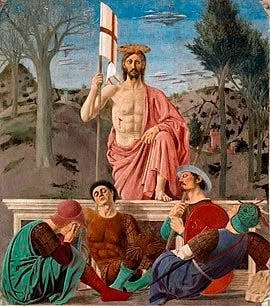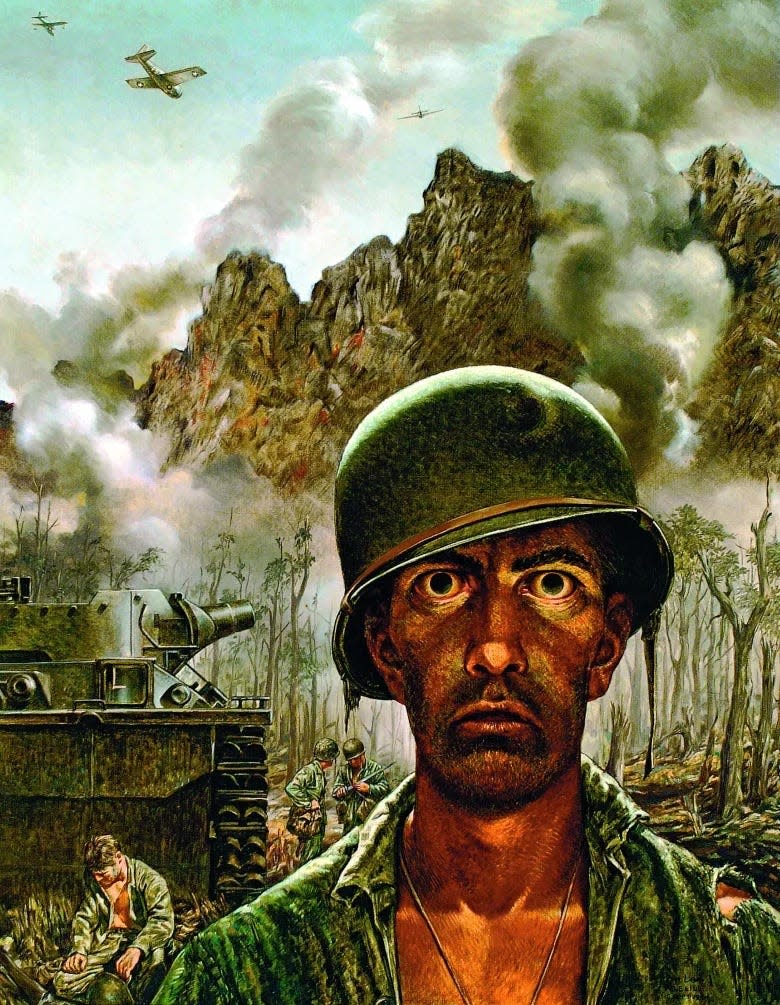Tom Lea Trail connects Texas to Italian Renaissance: Adair Margo

- Oops!Something went wrong.Please try again later.
This fall, the Tom Lea Institute and Texas Historical Commission will begin a new era in Texas tourism with the release of the Tom Lea Trail Mobile Tour. It is the first Texas heritage trail in a dozen years and the only one named for an artist. The tour is formatted for easy use by people at home, students in a classroom, and travelers from afar.
Seeds for the trail planted in 2007
The seeds for the trail were planted in 2007 when an Italian Renaissance scholar teaching in Poitiers, France, named Luciano Cheles sent an e-mail to a fledgling Tom Lea Institute in El Paso. He’d been leafing through a book on Texas murals and was struck by a reproduction of Lea’s “Pass of the North” in El Paso’s old federal courthouse.
Luciano thought he saw the influence of the Italian Renaissance painter Piero della Francesca in Lea’s stoic nine-foot figures. Could an artist living in far West Texas be inspired by Piero’s work? Googling Tom Lea, he found my name and sent a message asking if Lea had ever seen Piero’s work.
Immediately I responded, yes! I’d recorded Tom’s oral history 14 years before and he told me how he’d seen Piero’s frescoes in Arezzo in 1930 and touched them with his hand. He said he’d found the pictures he’d been looking for his entire life as his eyes filled with tears.

12 communities and 24 locations to explore
Lea was a regional painter, interested in deepening a community’s understanding of its own traditions and the character of its own land. Every Lea painting tells you something about the place you visit.
There are 12 communities and 24 locations to explore, drawing travelers to different regions of the state either virtually, or by plane, train, or car. Actual travelers can pick and choose what interests them, taking a week or two on an itinerary that includes:
Odessa: “Stampede” in the Ellen Noel Museum (originally painted for the Odessa Post Office) and currently on loan to the museum in neighboring Midland.
Alpine: “The History of Western Beef Cattle” in the Museum of the Big Bend, telling the epic story of the arrival of the first cattle in America, and their life cycle from breeding to slaughter.
Seymour: “Comanche Warriors” in the Post Office near the heart of their historic territory.
Dallas: “Rio Grande,” which was in the Oval Office of the White House and is reproduced at the George W. Bush Library and Presidential Center.
Waco: “A Little Shade” in the Texas Ranger Hall of Fame depicting a Ranger and his mount, and R.E.B. Baylor, the founder of Baylor University, at the Carroll Library on campus.
Bryan/College Station: “Old Breed, New Brotherhood” of a Fort Bliss veteran from Operation Desert Storm at the Don & Ellie Knauss Veteran Resource & Support Center.
Galveston: “The First Recorded Surgical Operation in America, Cabeza de Vaca Removing an Arrow from an Indian’s chest in 1535” at the University of Texas Medical Branch, Moody Library.
Austin: “Ranger Escort West of the Pecos,” commissioned for Texas Gov. John Connally. Lea chose the subject to remind legislators that people live west of the Pecos River.
Fredericksburg: “Marines Call It That 2,000 Yard Stare,” arguably the most famous painting of war ever done, reproduced at the National Museum of the Pacific War as part of the Peleliu exhibit.
Kingsville: take a tour of The King Ranch. Lea took five years writing and illustrating its history.
Hebbronville: El Randado, the ruins of a legendary South Texas horse ranch that could not be painted but had to be expressed in words.

Other comparisons between Tom Lea and Piero della Francesca
Despite his greatness, Piero and his work were not widely known in the 15th century when he lived. He studied in Florence, an artistic center, but was from the border in the upper Tiber Valley where the three regions of Tuscany, Umbria and Marche meet.
He did his most important work in small towns, not in bustling cities like Milan and Rome. To experience Piero’s paintings, you need to go to the places where they are.
The same is true of Lea. Despite his gifts as a muralist, illustrator, World War II artist correspondent, novelist, historian, portraitist, and landscapist, he is not widely known. He studied art in Chicago but was from the El Paso border, where Texas, New Mexico and Chihuahua meet.
He didn’t gravitate to urban art centers but worked from his studio in El Paso at the base of Mount Franklin. To experience Lea’s paintings, you need to go to the places where they are.
Adair Margo is the founder of the Tom Lea Institute. She is the former first lady of El Paso.
This article originally appeared on El Paso Times: Tom Lea Trail app begins new era in Texas tourism

